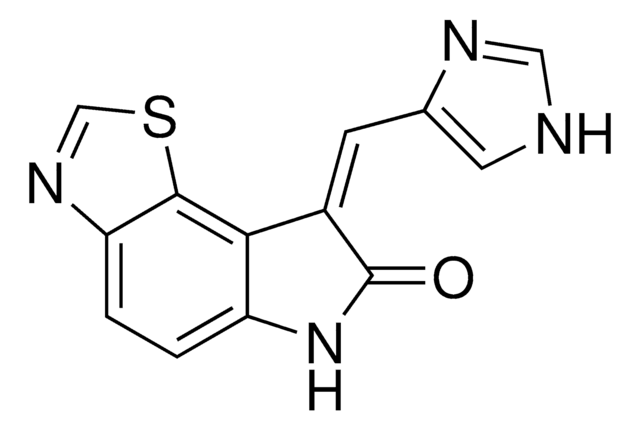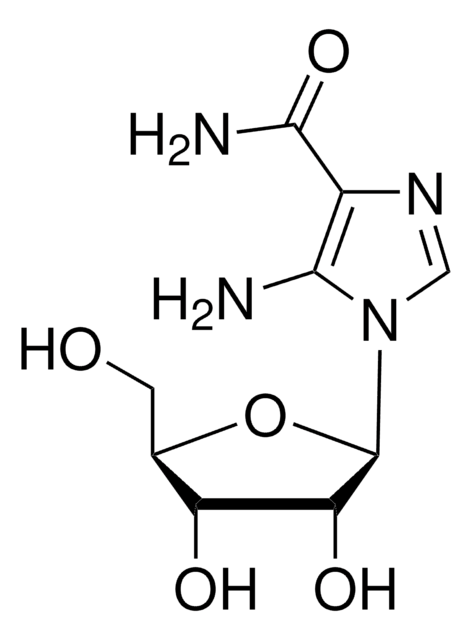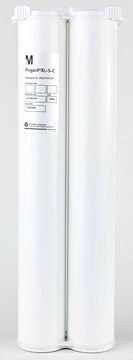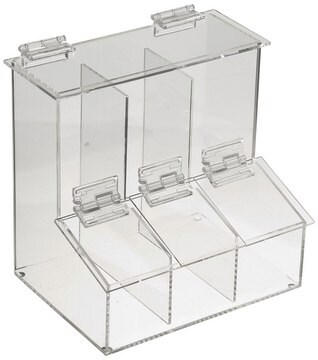17-10101
ChIPAb+ Acetyl-Histone H4 (Lys16) - ChIP Validated Antibody and Primer Set
from rabbit
Synonym(e):
H4K16Ac, Histone H4 (acetyl K16), H4 histone family, member A, histone 1, H4a, histone cluster 1, H4a
About This Item
Empfohlene Produkte
Biologische Quelle
rabbit
Qualitätsniveau
Antikörperform
affinity purified immunoglobulin
Klon
polyclonal
Speziesreaktivität
vertebrates, human
Hersteller/Markenname
ChIPAb+
Upstate®
Methode(n)
ChIP: suitable
immunoprecipitation (IP): suitable
western blot: suitable
NCBI-Hinterlegungsnummer
UniProt-Hinterlegungsnummer
Versandbedingung
dry ice
Allgemeine Beschreibung
The ChIPAb+ Acetyl-Histone H4 (Lys16) set includes the Acetyl-Histone H4 (Lys16) antibody, a negative control normal rabbit IgG, and qPCR primers which amplify a 178 bp region of human RPL10 promoter. The Acetyl-Histone H4 (Lys16) and negative controls are supplied in a scalable "per ChIP" reaction size and can be used to functionally validate the precipitation of Acetyl-Histone H4 (Lys16)-associated chromatin.
Spezifität
Immunogen
Anwendung
Epigenetik & nukleäre Funktionen
Histone
Representative lot data.
Sonicated chromatin prepared from HeLa cells (1 X 10E6 cell equivalents per IP) were subjected to chromatin immunoprecipitation using either 2 µg of Normal rabbit IgG or 2 µL of Anti-acetyl-Histone H4 (Lys16) and the Magna ChIP A Kit (Cat. # 17-610).
Successful immunoprecipitation of acetyl-Histone H4 (Lys16) associated DNA fragments was verified by qPCR using ChIP Primers, RPL10 Promoter as a positive locus, and β-Globin primers as a negative locus. (Please see figures). Data is presented as percent input of each IP sample relative to input chromatin for each amplicon and ChIP sample as indicated.
Please refer to the EZ-Magna ChIP A (Cat. # 17-408) or EZ-ChIP (Cat. # 17-371) protocol for experimental details.
Western Blot Analysis:
Representative lot data.
Recombinant Histone H4 (Cat # 14-697) (lane1) and HeLa acid extract (lane 2) was resolved by electrophoresis, transferred to PVDF and probed with anti-Acetyl Histone H4 (Lys16) (0.1 μg/mL).
Proteins were visualized using a donkey anti-rabbit secondary antibody conjugated to HRP and a chemiluminescence detection system.
Arrow indicates Acetyl Histone H4 (Lys16) (~10 kDa) (Please see figures).
Multiplexing (Luminex):
Representative lot data.
This antibody specifically recognizes histone H4 acetylated on Lys16 by Luminex assay (Please see figures).
Peptide Inhibition Assay:
Representative lot data.
This antibody peptide blocked on HeLa cell extracts (Please see figures).
Verpackung
Qualität
Sonicated chromatin prepared from HeLa cells (1 X 10E6 cell equivalents per IP) were subjected to chromatin immunoprecipitation using either 2 µg of Normal Rabbit IgG or 2 µL of Anti-acetyl-Histone H4 (Lys16) and the Magna ChIP® A Kit (Cat. # 17-610).
Successful immunoprecipitation of acetyl-Histone H4 (Lys16) associated DNA fragments was verified by qPCR using ChIP Primers, RPL10 Promoter (Please see figures).
Please refer to the EZ-Magna ChIP A (Cat. # 17-408) or EZ-ChIP (Cat. # 17-371) protocol for experimental details.
Zielbeschreibung
Physikalische Form
Normal Rabbit IgG. One vial containing 125 µg of rabbit IgG in 125 µL of storage buffer containing 0.05% sodium azide. Store at -20°C.
ChIP Primers, RPL10 promoter. One vial containing 75 μL of 5 μM of each primer specific for the promoter region of human RPL10. Store at -20°C.
FOR: ACC CGT CTT CGA CAG GAC T
REV: GGA ACG GAA GAC GAG AAC AG
Lagerung und Haltbarkeit
Hinweis zur Analyse
Includes negative control normal rabbit IgG and primers specific for human RPL10 promoter.
Rechtliche Hinweise
Haftungsausschluss
Lagerklassenschlüssel
12 - Non Combustible Liquids
Flammpunkt (°F)
Not applicable
Flammpunkt (°C)
Not applicable
Analysenzertifikate (COA)
Suchen Sie nach Analysenzertifikate (COA), indem Sie die Lot-/Chargennummer des Produkts eingeben. Lot- und Chargennummern sind auf dem Produktetikett hinter den Wörtern ‘Lot’ oder ‘Batch’ (Lot oder Charge) zu finden.
Besitzen Sie dieses Produkt bereits?
In der Dokumentenbibliothek finden Sie die Dokumentation zu den Produkten, die Sie kürzlich erworben haben.
Unser Team von Wissenschaftlern verfügt über Erfahrung in allen Forschungsbereichen einschließlich Life Science, Materialwissenschaften, chemischer Synthese, Chromatographie, Analytik und vielen mehr..
Setzen Sie sich mit dem technischen Dienst in Verbindung.







